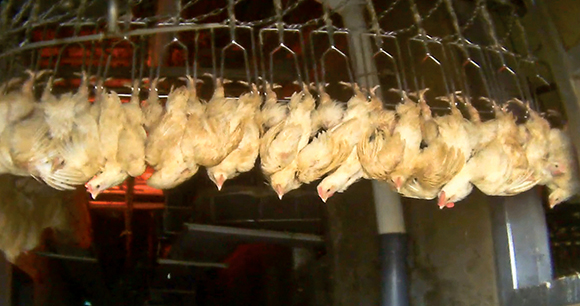An AWI report released in December revealed that the US Department of Agriculture’s approach to preventing and responding to the mistreatment of birds in slaughter plants remains largely ineffective. The Welfare of Birds at Slaughter in the United States analyzed USDA poultry slaughter inspection records from 2020 through 2022 at approximately 350 federally inspected plants, which process the vast majority of the 9.7 billion chickens, turkeys, ducks, and other birds killed each year for meat in the United States.

Federal law does not explicitly require that individual birds be handled humanely while being processed for slaughter. However, in 2005, in response to public and congressional outcry, the USDA issued a notice that poultry “must be handled in a manner that is consistent with good commercial practices [GCP], which means they should be treated humanely.” The department began documenting violations of GCP, such as intentional, repeated abuse, or birds entering scald tanks while still alive. The USDA also began documenting instances of mishandling that were not deemed comprehensive enough to be considered GCP violations, such as when a small number of birds are mistreated or are harmed by an isolated equipment malfunction.
From 2006 until 2018, the USDA gradually increased the number of Noncompliance Records (for GCP violations) and Memorandums of Interview (for incidents not considered GCP violations) issued to slaughter plants. However, from 2018 to 2022, the number decreased by more than 40 percent, from 509 down to 223. And from 2020 through 2022, inspectors took actions to prevent the abuse of birds—such as by slowing or stopping the slaughter line—in only 12 percent of documented incidents. During that same period, inspectors issued only five Letters of Concern (for serious and repeated GCP violations), two of which were sent to the same plant, and four of which were issued by just one of the USDA’s 10 district offices.
AWI’s report concluded with a list of steps the USDA should take to better protect birds at slaughter, including the promulgation of regulations to require humane handling of birds and the practice of referring egregious instances of abuse to local law enforcement for prosecution under state animal cruelty laws.